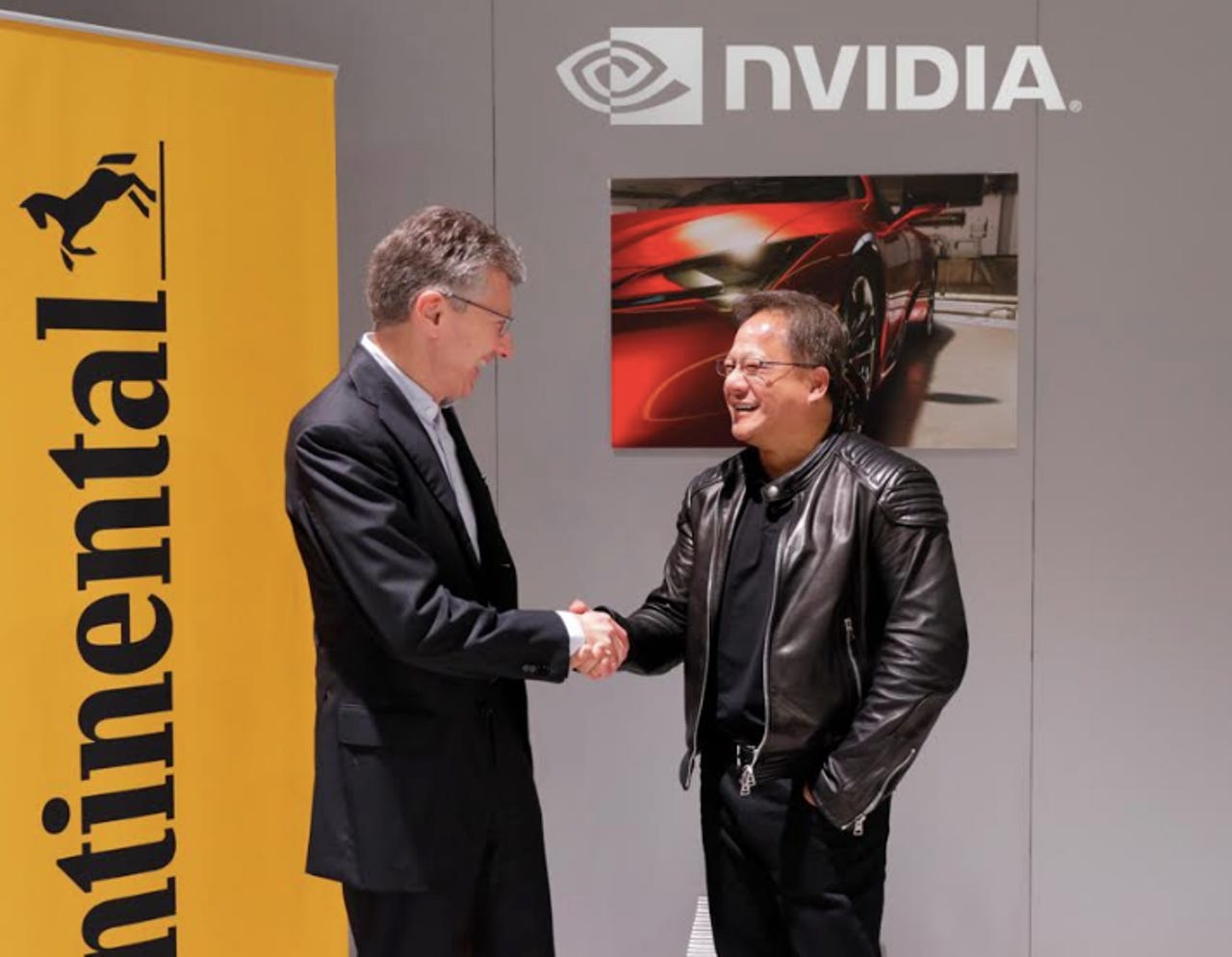Nvidia, Continental to develop self-driving system based on Nvidia Drive


For Nvidia, autonomous driving and a leadership position means more use cases for its GPUs, which are used for high-performance computing as well as the cloud.
Nvidia has inked a deal with Continental to create self-driving vehicle systems built on the Nvidia Drive platform for the automaker's car lineup starting in 2021.
Featured
The companies will initially develop automated Level 2 features, including 360-degree perception, automatic lane changing on highways, and the ability to merge into traffic, as well as HD map integration integrate for vehicle localization and mapping updates.
Longer term, Continental will support AI computer systems that reach fully autonomous Level 5 capabilities.
"The vehicle of the future will be a sensing, planning and acting computer on wheels," said Elmar Degenhart, CEO of Continental. "The complexity of autonomous driving requires nothing less than the full computational horsepower of an AI supercomputer."
For Nvidia, autonomous driving and a leadership position means more use cases for its GPUs, which are used for high-performance computing as well as the cloud.
"We now have all the key elements in place to take AI self-driving cars from development to mass production," said Nvidia CEO Jensen Huang. "Our newly arrived Drive Xavier processor, extensive Nvidia Drive software, and cloud-to-car approach for testing, validation and functional safety, combined with Continental's expertise and global reach, will bring autonomous cars to the world."
Xavier is Nvidia's $2 billion R&D bet on automotive AI. The SoC (system on a chip) was built to process Level 5 autonomous driving data from a vehicle's radar, cameras, Lidar, and ultrasonic systems. It has more than nine billion transistors with a custom 8-core CPU, a 512-core Volta GPU, an 8K HDR video processor, a deep-learning accelerator, new computer-vision accelerators, and the ability to perform 30 trillion operations per second on 30 watts of power.
Xavier was first teased a year ago but now forms the basis of two recently announced software platforms -- Drive IX and Drive AR -- all of which are part of Nvidia's Pegasus AI computing platform. For Nvidia customers, the Pegasus motherboard is pitched as the path to production for fully autonomous vehicles.
PREVIOUS AND RELATED COVERAGE
NVIDIA swings for the AI fences
The company you know for its gaming and graphics tech has transformed into an AI powerhouse. Its next frontier is being an autonomous vehicle powerhouse and a household name.
CES 2018: Mobileye claims autonomous driving solution more efficient than Nvidia
Mobileye has said its acquisition by Intel means it is able to bring both hardware and software together as a differentiation to rival Nvidia's hardware-focused autonomous driving solution.
Nvidia looks to reduce AI training material through 'imagination'
Cats are lions and winter is now summer as Nvidia researchers show off a pair of generative adversarial networks that can be used to generate images.